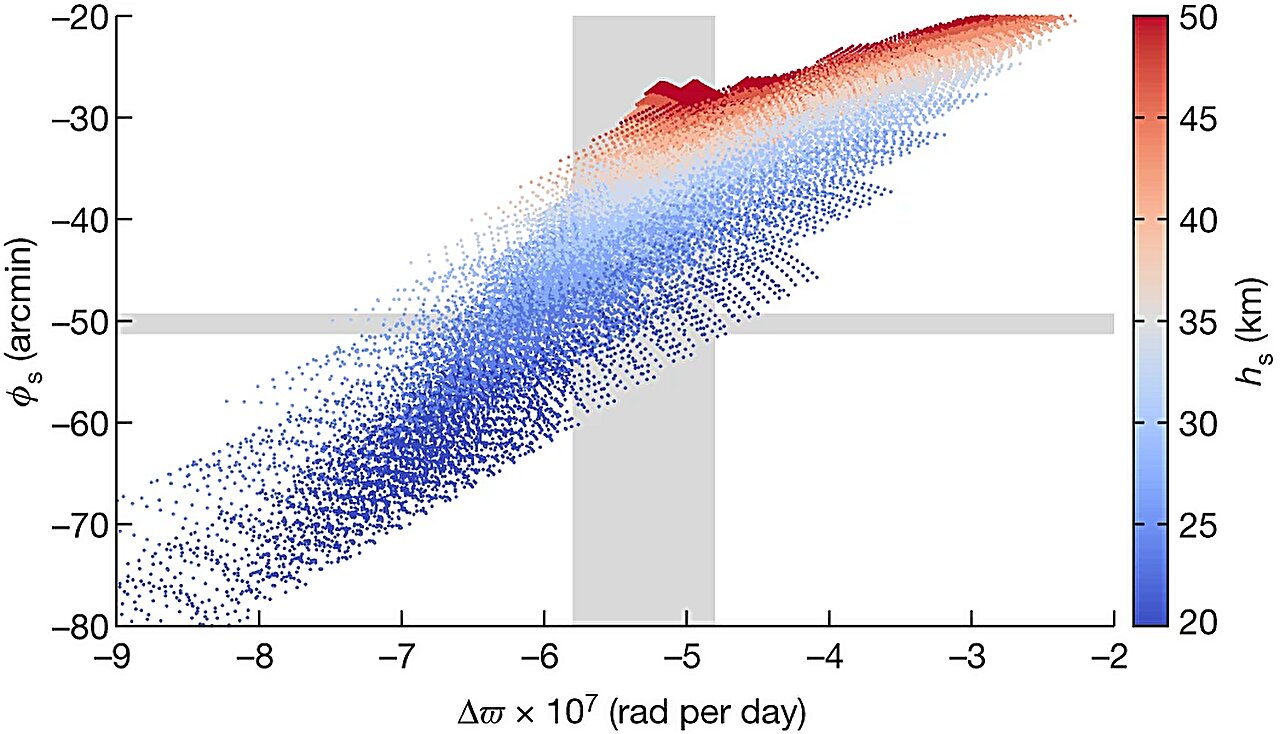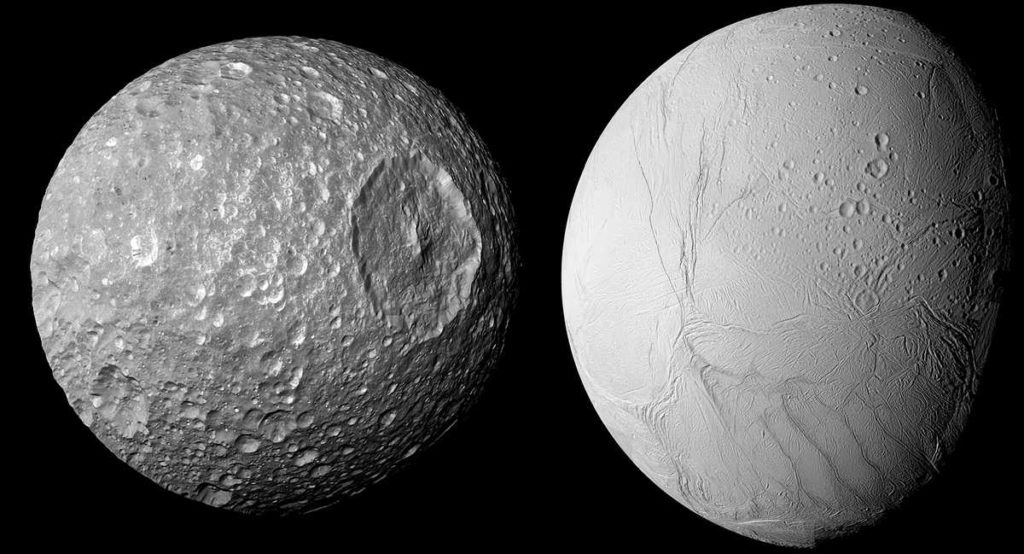
Hidden beneath the heavily cratered surface of Mimas, one of Saturn’s smallest moons lies a secret: a global ocean of liquid water. This astonishing discovery, led by Dr...
Read More

Hidden beneath the heavily cratered surface of Mimas, one of Saturn’s smallest moons lies a secret: a global ocean of liquid water. This astonishing discovery, led by Dr...
Read More
Discovery could point to a new class of ‘stealth’ ocean worlds. A Southwest Research Institute scientist set out to prove that the tiny, innermost moon of Saturn was a frozen inert satellite and instead discovered compelling evidence that Mimas has a liquid internal ocean...
Read More
Three of Saturn’s moons, Tethys, Enceladus and Mimas, taken in visible light with the Cassini spacecraft narrow-angle camera on December 3, 2015 is shown in this NASA image released on February 22, 2016. © NASA / JPL-Caltech / Space Science Institute / Reuters
Tethys (660 miles or 1,062 kilometers across) appears above the rings, while Enceladus (313 miles or 504 kilometers across) sits just below center. Mimas (246 miles or 396 kilometers across) hangs below and to the left of Enceladus. This view looks toward the sunlit side of the rings from about 0.4 degrees above the ring plane. The image was taken in visible light with the Cassini spacecraft narrow-angle camera on Dec. 3, 2015.
The view was acquired at a distance of ~837,000 miles from Enceladus, with an image scale of 5 miles per ...
Read More
Recent Comments